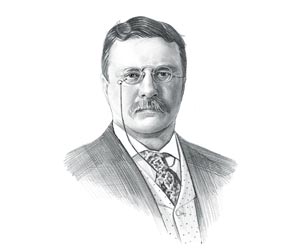|
|
|
|
|
Learn about the first human inhabitants in the area. The history timeline provides facts and information about the people and import events relating to the history of one of the Natural Wonders of the World.
Grand
Canyon
History Timeline for kids
Grand Canyon History Timeline and Timeline : Fast Facts for kids via the
History Timeline Fact Sheet 1540 : Hopi guides led a party of Spanish conquistadores, under Captain Garcia Lopez de Cardenas, to the south rim of the Canyon 1826: Mountain man and pioneer James Ohio Pattie (1804-c. 1850), visited the area and documented his travels in the Personal Narrative of James O. Pattie published in 1831 1848: The U.S. gained the area in the Treaty of Guadalupe Hidalgo and pathed the way for more American explorers 1857: The first official U.S. government expedition was led by soldier and botanist Lieutenant Joseph Ives (1829 – 1868). His expedition went on the paddlewheel steamboat Explorer to map and survey the Colorado river. 1869: John Wesley Powell (1834 – 1902) led expeditions down the Colorado River and Green River in 1869 and 1872 and wrote about his experiences. Powell Plateau is named after him 1870: More American prospectors hoping to find silver or gold explored the area 1890: The Conservation Movement advocated the establishment of state and national and state parks, wildlife refuges and national monuments during the Progressive Era. 1890: Environmentalism also emerged during the Progressive Era. Environmentalists belief that the natural world including animals, fish, birds, plants, trees, water, air and and other natural resources were sacred and should be protected from destruction or pollution. 1882: Clarence Dutton (1841 – 1912) was an American geologist and US Army officer wrote the Cenozoic history of the Grand Canyon district after conducting surveys in the Colorado Plateau region 1883: John Hance (1840 – 1919) is credited with being the first American settler - he later acted as a tourist guide 1883: William Wallace Bass (1849 – 1902) was one of the first Americans to prospect and then settle. Bass became the first American to guide tourists to visit Cataract Canyon (now known as Havasu Canyon) 1884: The first regular tourist stagecoaches ran from the railroad stop at Peach Springs, Arizona.
1892: The Santa Fe Railway made an
agreement with famous artist Thomas Moran, who had 1894: William Bass and writer George Wharton James prepare lantern slides to take across the country to advertise the Natural Wonder of the World attracting many famous visitors 1897: John Hance and Pete Berry, built a trail and guest ranch near Grandview Point. 1900: Travel writer George Wharton James writes a guidebook with the help of William Bass alerting Americans to the wonderful sites to be seen and its rich heritage. Publications such as these increase interest in the Conservation Movement and Environmentalism. 1901: The Atchison, Topeka, and Santa Fe Railway first reached the Grand Canyon and the train service begins 1901: The first automobile arrived 1901: Theodore Roosevelt, an ardent conservationist, became President and was instrumental in protecting natural features of America 1902: Geologist Francois Matthes (1874-1948) mapped the Grand Canyon of the Colorado River 1902: A book of photography by Henry Peabody entitled 'Glimpses of the Grand Canyon of Arizona' was published by the Fred Harvey Company 1902 : Ellsworth and Emery Kolb establish their photographic business 1902: The naturalist, environmentalist and preservationist John Muir (1838 – 1914) published "Our Grand Canyon" urging visitors to not just enjoy the scenery, but "to learn something about the plants and animals and the mighty flood roaring past". Refer to Famous Environmentalists 1905: Gifford Pinchot (1865–1946), was appointed the first chief of the U.S. Forest Service, who believed that natural resources should be used to provide the "greatest good for the greatest number of people." 1905 : The El Tovar Hotel opens:
1906: President Roosevelt created the Grand Canyon Game Preserve by proclamation in 1906 and the Grand Canyon National Monument in 1908. 1906: President Roosevelt signed legislation for the National Monuments Act ( Antiquities Act) that authorized the President to establish national monuments for the preservation of historic, prehistoric, and scientific interest 1908: The Grand Canyon was created a National Monument 1910: Travel writer George Wharton James writes the guidebook called 'The Grand Canyon of Arizona: How to See It' 1912: Arizona receives statehood 1919: The Grand Canyon was designated as a National Park by President Woodrow Wilson 1956: Construction of Glen Canyon Dam is authorized 1963: The gates of Glen Canyon Dam close and the Colorado River ceases to run as a wild river through the area |
| US American History |
| 1881-1913: Maturation Era |
| Grand Canyon Facts |
| 1906 National Monuments Act |
|
|
|
|
|
First Published2016-04-19 | |||
|
Updated 2018-01-01 |
Publisher
Siteseen Limited
| ||
|
|

